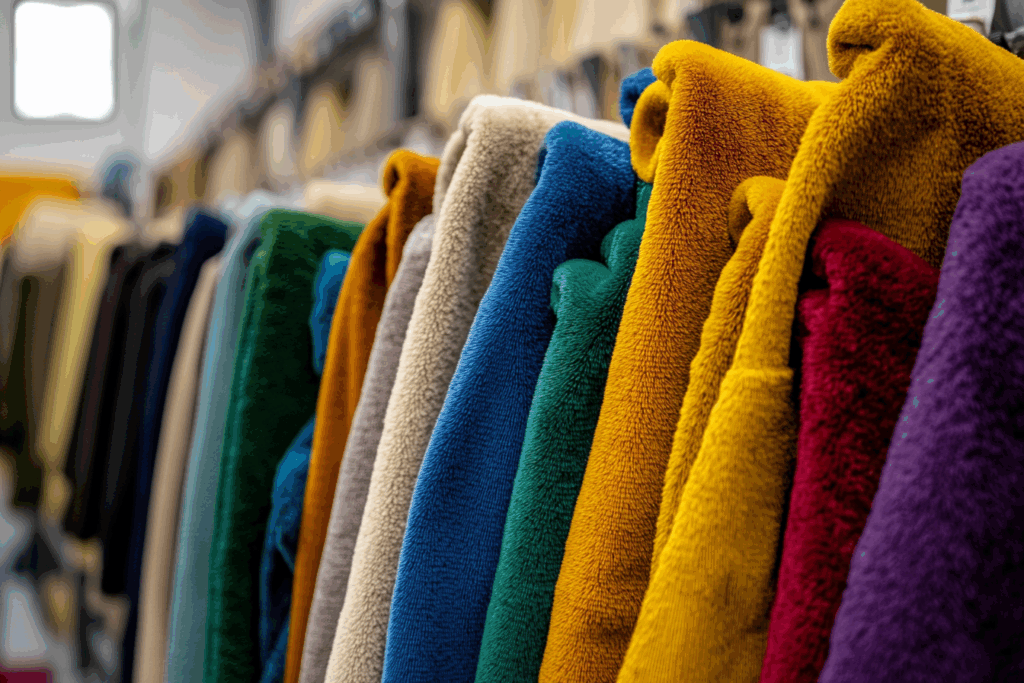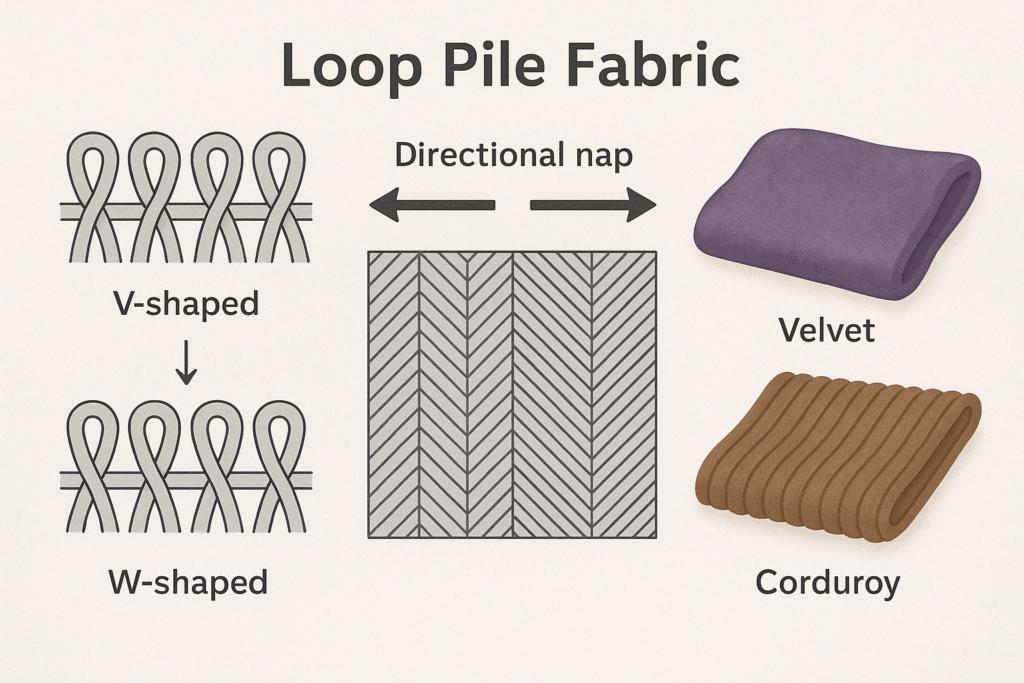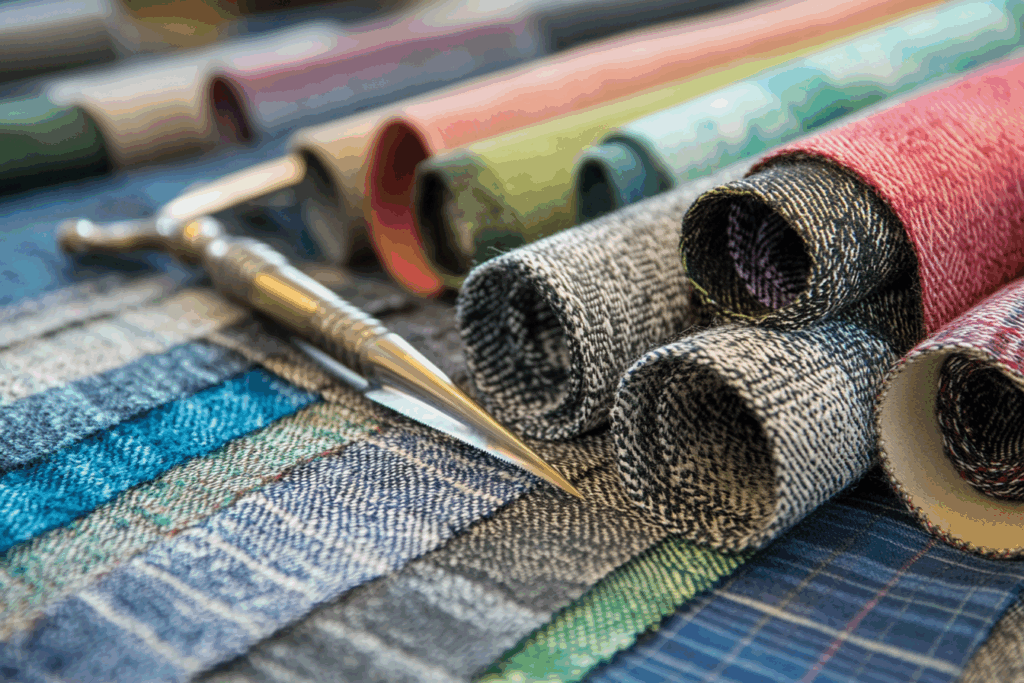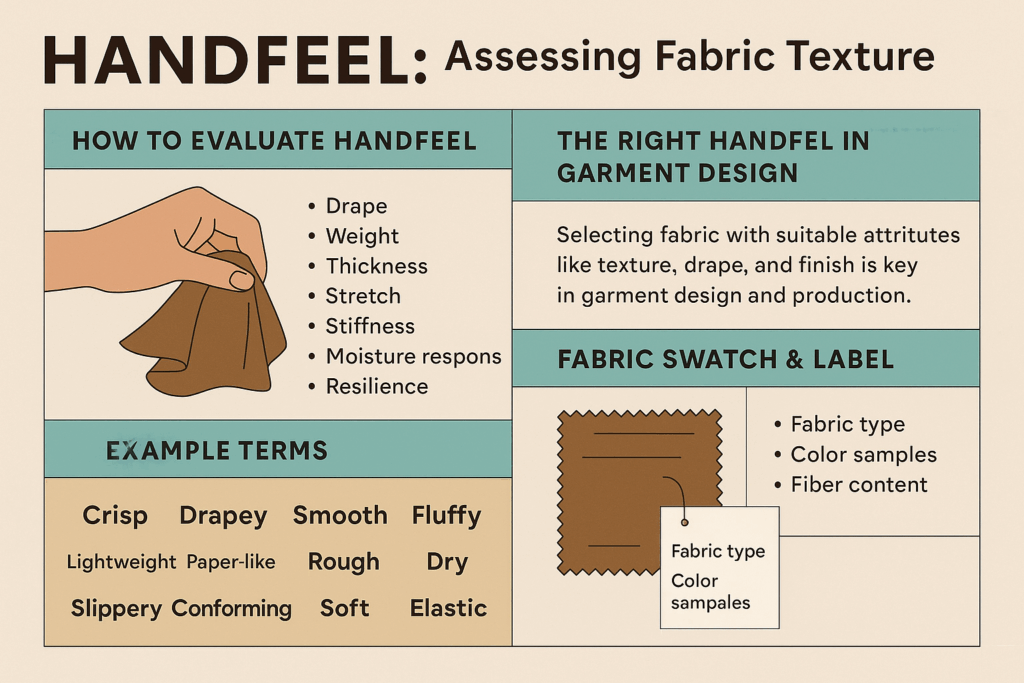Loop Pile Fabric: Structure, Characteristics, and Garment Applications
🧵 What Is Loop Pile Fabric?
Loop pile fabric refers to a type of textile where loops of yarn are woven into the fabric surface to create a raised texture. This pile surface gives the fabric a soft, plush feel and improves insulation, comfort, and appearance. Loop pile structures are commonly found in velvet, corduroy, fleece, and faux fur.
📌 Loop pile fabrics are valued for their softness, warmth, and distinct texture, making them ideal for winter and luxury garments.
🧷 How Loop Pile Is Constructed
🔸 Double-Layered Weaving
- Made using a double-motion shuttle loom
- Two layers of fabric are woven simultaneously, then cut apart to produce the pile effect
- Used in fabrics like velvet, where the top surface has a rich, vertical pile
🔸 Loop Formation Types
| Loop Shape | Structure | Features |
|---|---|---|
| W-shape | Loops around three yarns | More durable, higher-end (used in luxury velvet) |
| V-shape | Loops around a single yarn | More common, cost-effective, less durable |
🧪 You can check the pile type by pulling threads from the edge—W-shaped loops hold better over time.


🌈 Directional Nap: Nap vs. Reverse Nap
Some loop pile fabrics, like corduroy and velvet, have visible pile directionality:
- Nap: Pile fibers lay down in one direction — appears darker
- Reverse nap: Pile is viewed from the opposite direction — appears lighter
- When cutting garments, this difference must be accounted for to avoid color mismatches
✂️ Always cut pattern pieces in the same nap direction unless a design contrast is intentional.
🔍 Characteristics of Loop Pile Fabrics
| Property | Description |
|---|---|
| 🌟 Texture | Soft, plush, often thick |
| 🔁 Pile Direction | Affects color, light reflection, and visual uniformity |
| 💨 Insulation | Excellent heat retention due to air trapped between fibers |
| 💪 Durability | W-shaped pile is more durable than V-shaped |
| 🎨 Appearance | Rich, luxurious surface—great for fashion and upholstery |
🧥 Garment Applications
Loop pile fabrics are widely used in cold-weather and luxury fashion. Common applications include:
- 🧥 Velvet – evening gowns, suits, jackets
- 👖 Corduroy – trousers, skirts, overalls
- 🐑 Faux fur & wool – outerwear, collars, trims
- 🧸 Fleece – sweatshirts, jackets, loungewear
- 👚 Luxe knitwear – dresses, tops with pile details
🧼 Fabric Care Tips
- ✅ Brush gently to lift the pile (nap) after washing
- ✅ Steam iron only from the wrong side (avoid crushing pile)
- ❌ Avoid bleach or high tumble drying — pile can distort or melt
- ✅ Store with care — hanging garments with pile can flatten texture
🎯 Key Takeaways for Designers
- Consider pile direction when laying out patterns
- Choose W-shaped pile for high-wear garments
- Understand how pile light reflection affects garment appearance
- Match fabric properties to function — insulation, softness, or texture
📌 Summary
Loop pile fabrics offer unmatched softness, visual richness, and insulating warmth. From luxury velvet to durable corduroy, their raised textures bring depth and comfort to a wide range of garments. Understanding loop structure, pile direction, and weaving technique is key to maximizing their design potential in both fashion and function.



